IMAX has published a BTS (Behind The Scenes) video, which is quite rare regarding the amount of information revealed on one of the most powerful film projects ever made – Oppenheimer, directed by Christopher Nolan and shot by Hoyte Van Hoytema on IMAX film cameras. Let’s read their thoughts and insights about making the movie.
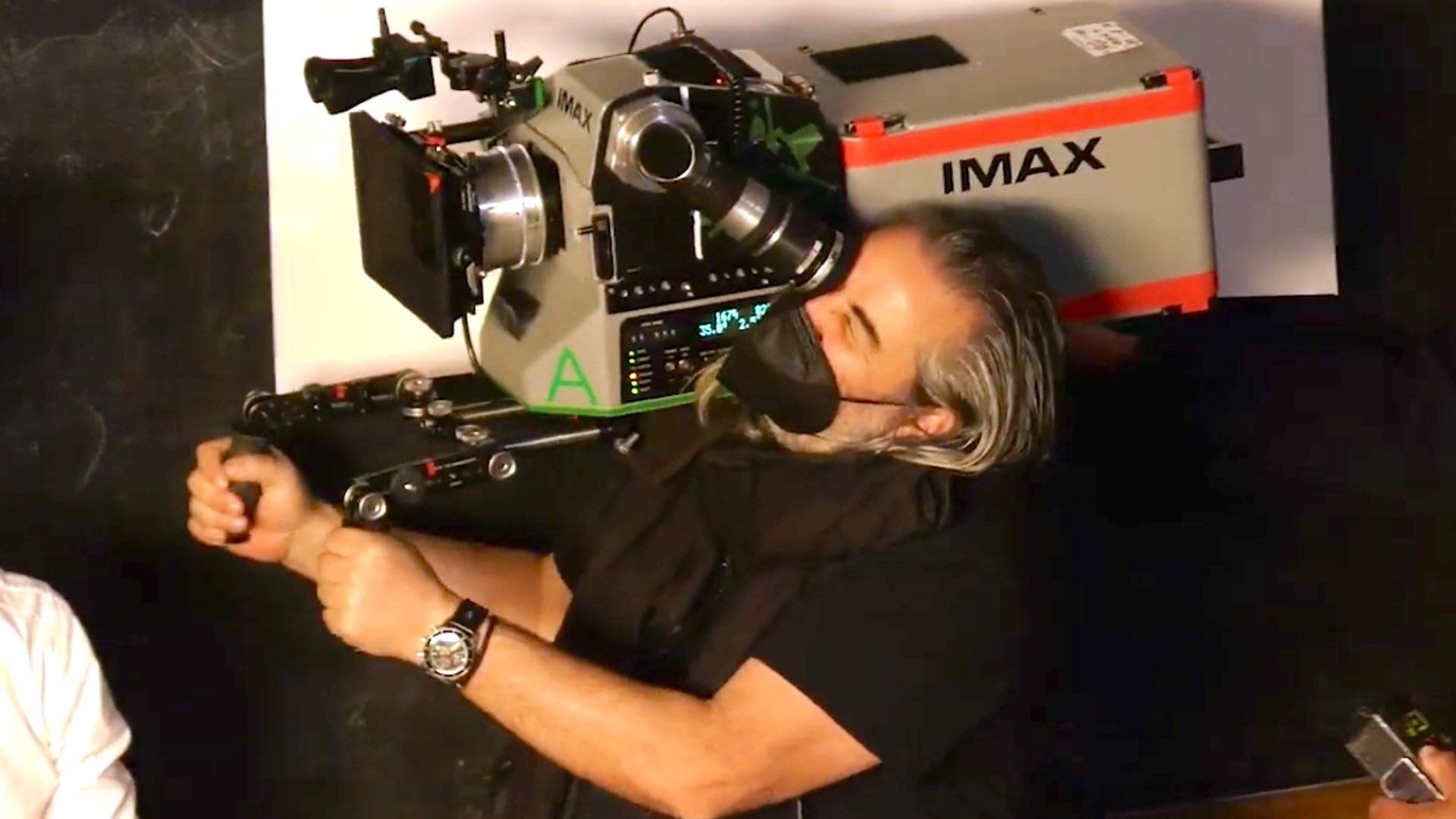
Oppenheimer: Filmed with IMAX cameras
The forthcoming Christopher Nolan’s Oppenheimer was shot with IMAX film cameras. Indeed, as IMAX (Image Maximum) business is booming during the post-COVID age, IMAX would want to leverage it, especially with the top-notch director and his cinematic partner (IMAX specialist and cinematographer Hoyte Van Hoytema) who both love IMAX cameras so much. Can we blame them? Till the second generation of IMAX cameras comes (supposed to be operational till the end of the year), Nolan and Hoyte had to deal with the all-mighty MSM 9802 which is bulky, cumbersome, and heavy. Nevertheless, these limitations were not prevented these top creators to use the cameras in all modes and shooting methods even on their shoulders. Hoyte loves to shoot with IMAX on his shoulder. He shot that way on many IMAX films. Solid references for that are Tenet, and now, Oppenheimer.
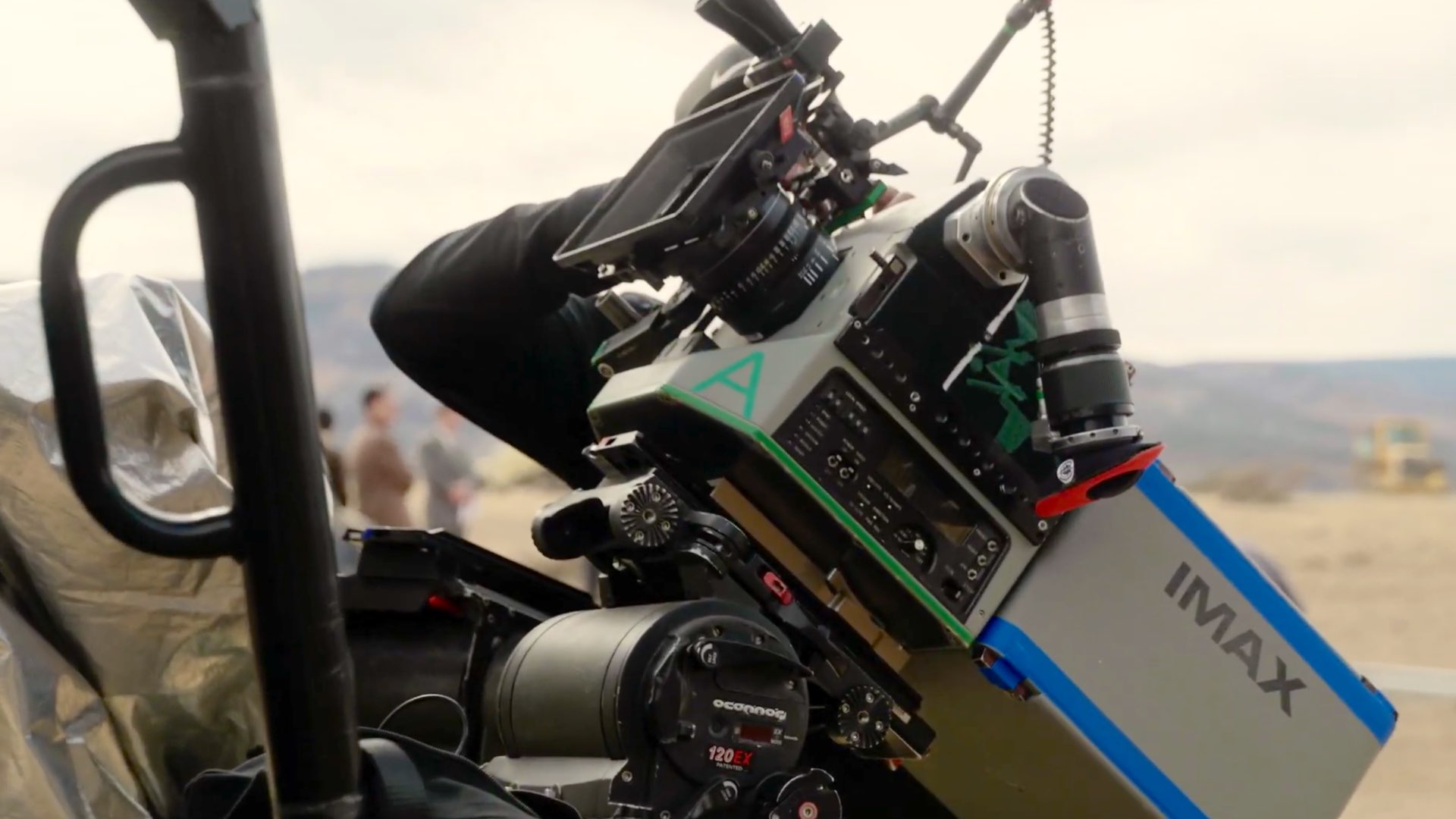
A Rare Behind The Scenes Glimpse
IMAX has released a BTS video showing the making of Oppenheimer, focusing on the technical aspects of shooting with IMAX cameras. We watched this video very carefully by trying to reveal as many details as we could. In this article, you can find screen grabs of the IMAX cameras used to shoot the film. Moreover, in the BTS featurette, Hoyte and Nolan, together with Executive Producer Thomas Hayslip, explain what is different in Oppenheimer (cinematography-wise) compared to other IMAX projects. Let’s read their insights below.
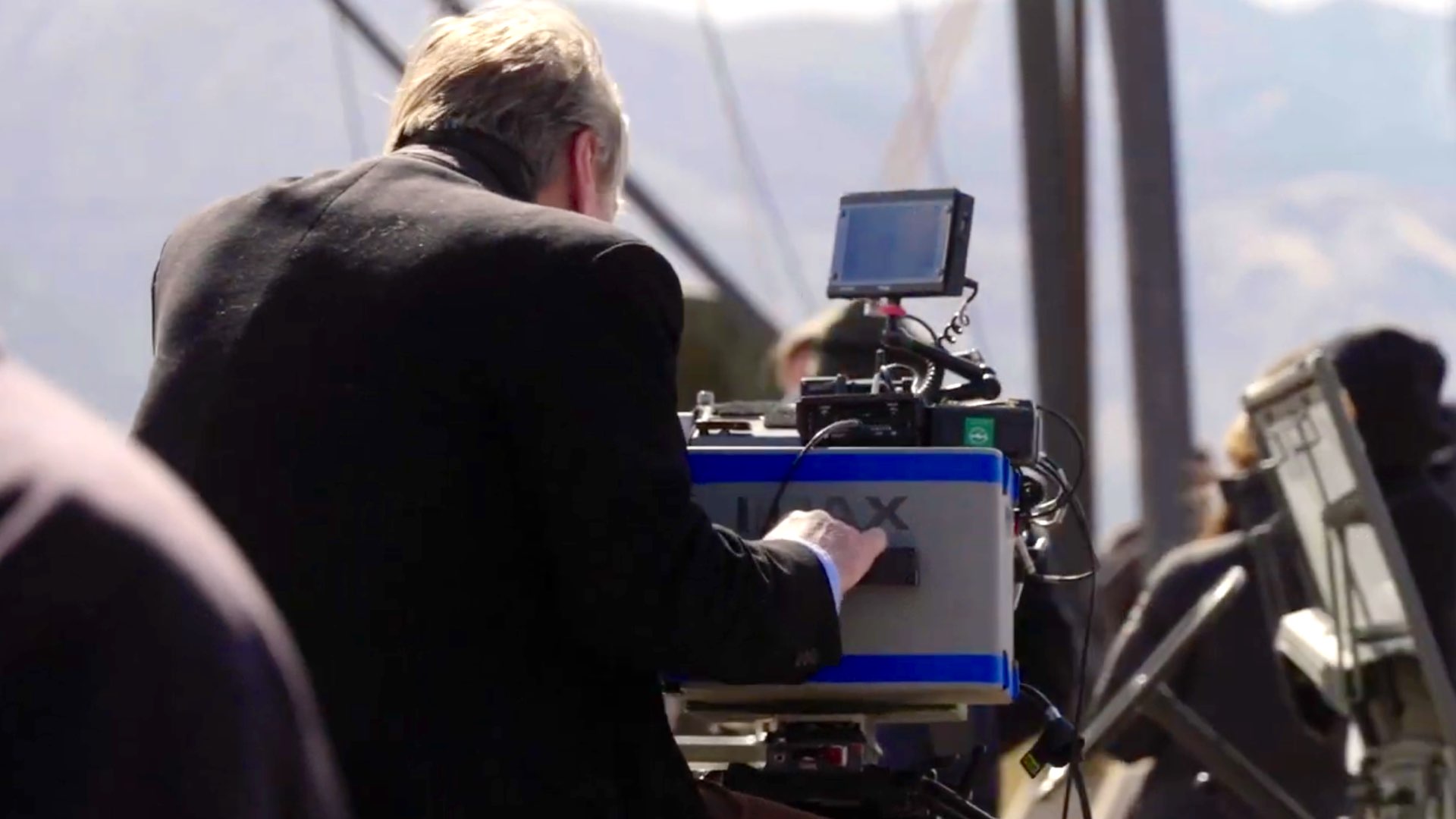
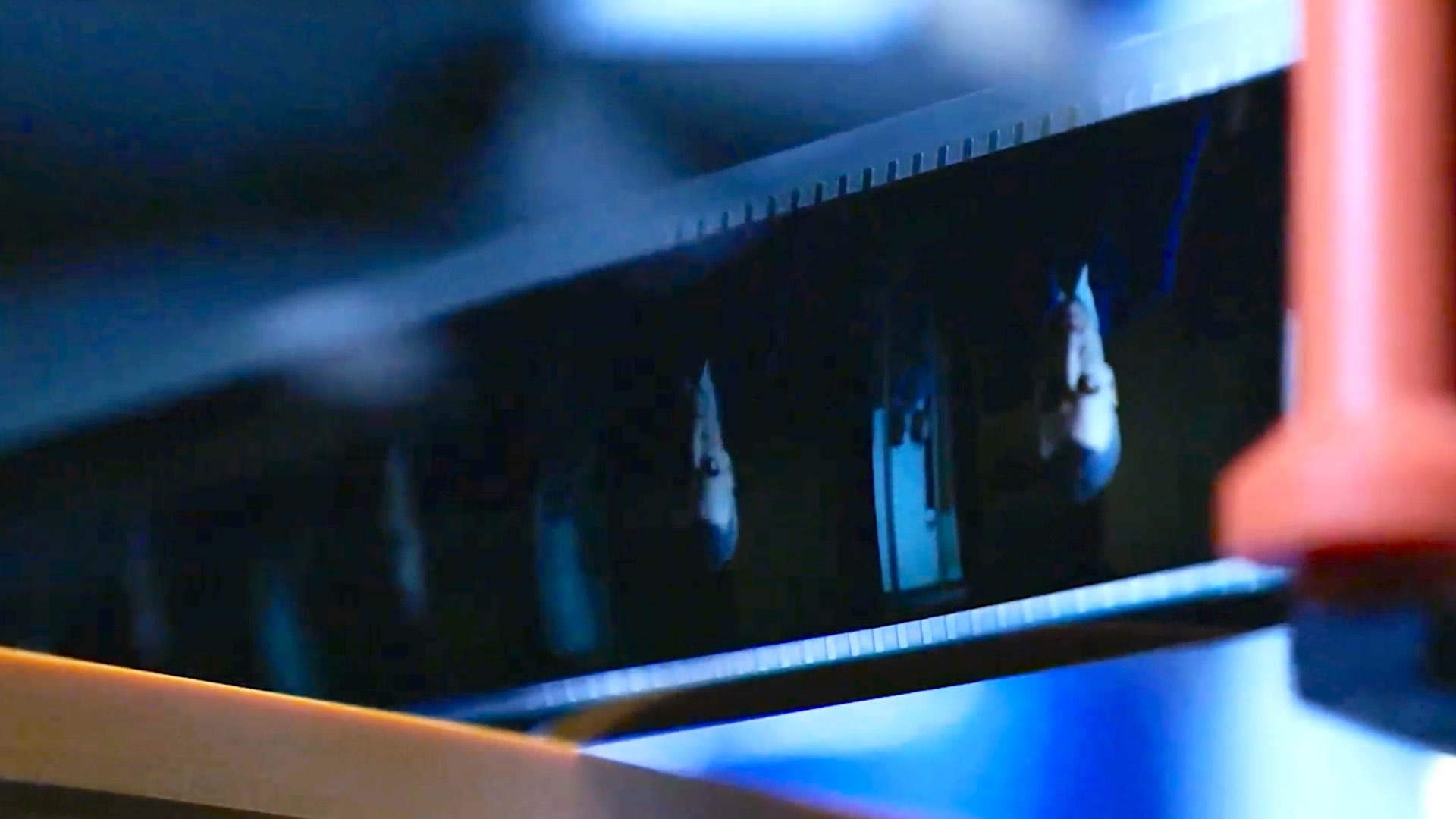
How are we going to do it because 65mm film black and white was a format that didn’t exists? So there was a lot of engineering going into that.
Oppenheimer DP – Hoyte van Hoytema
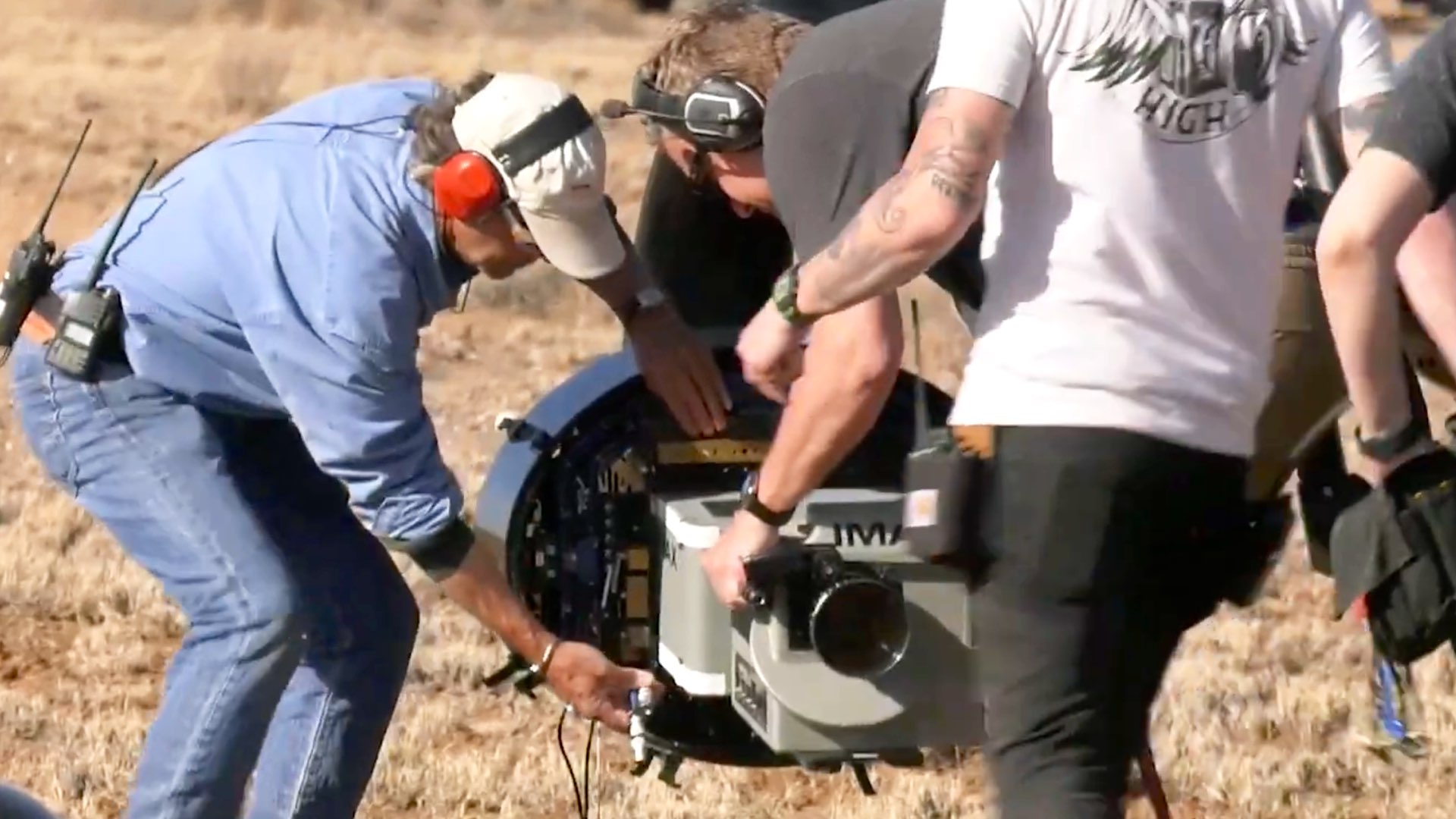
IMAX is a medium format of spectacle and it’s made for vistas, but I got curious to use it as an intimate format. Faces look like a landscape. There’s huge complexity and huge depth to it. How can we get this camera closer to people? How can we get this medium to work also as an intimate medium?
Oppenheimer DP – Hoyte van Hoytema
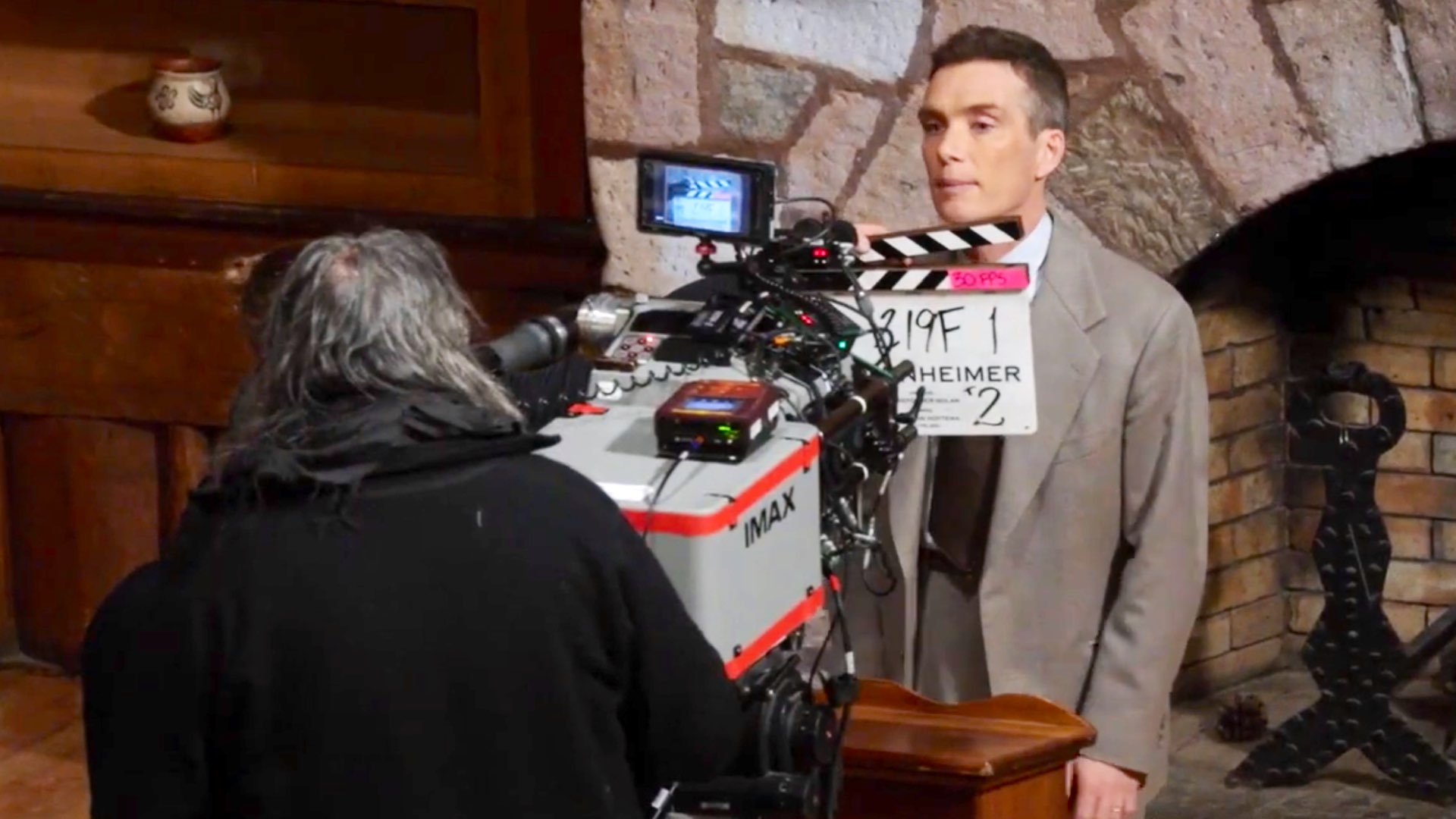
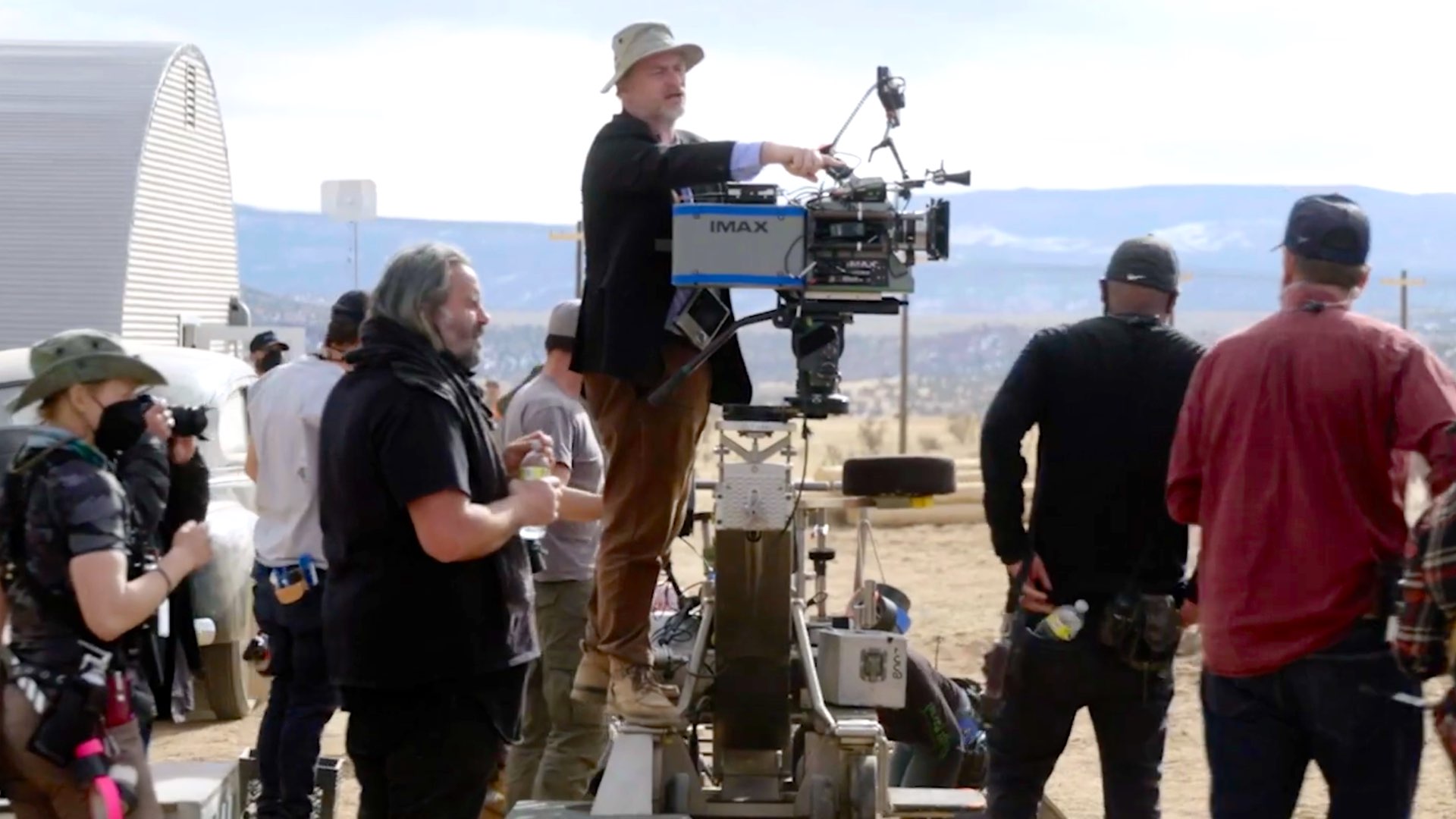
IMAX cameras for filming faces
Shooting faces with 15/70 is challenging…very challenging. These 15 perforations can’t lie. Everything looks enhanced. Read our article regarding the IMAX Filmmaker’s (15/70) Guide to understand why is so complicated to shoot faces with IMAX film cameras. Indeed, Cinematographer Hoyte Van Hoytema explains that challenge in the context of shooting Oppenheimer: “IMAX is a medium format of spectacle and it’s made for vistas, but I got curious of to use it as an intimate format. Faces look like a landscape. There’s huge complexity and huge depth to it. How can we get this camera closer to people? How can we get this medium to work also as an intimate medium?”. On Oppenheimer, there is a huge amount of face shots, closeups, portraits style shots. That’s pretty unique when performed with IMAX film cameras. Furthermore, it can even be more challenging when screening it in a true IMAX theater, since it’s equivalent to 18K of resolution. Hence, the audience can see even little details. Regarding Oppenheimer, it’s confirmed that the film will be released in 15/70 as well, to be screened at true IMAX film projectors, just like Tenet and Dunkirk.
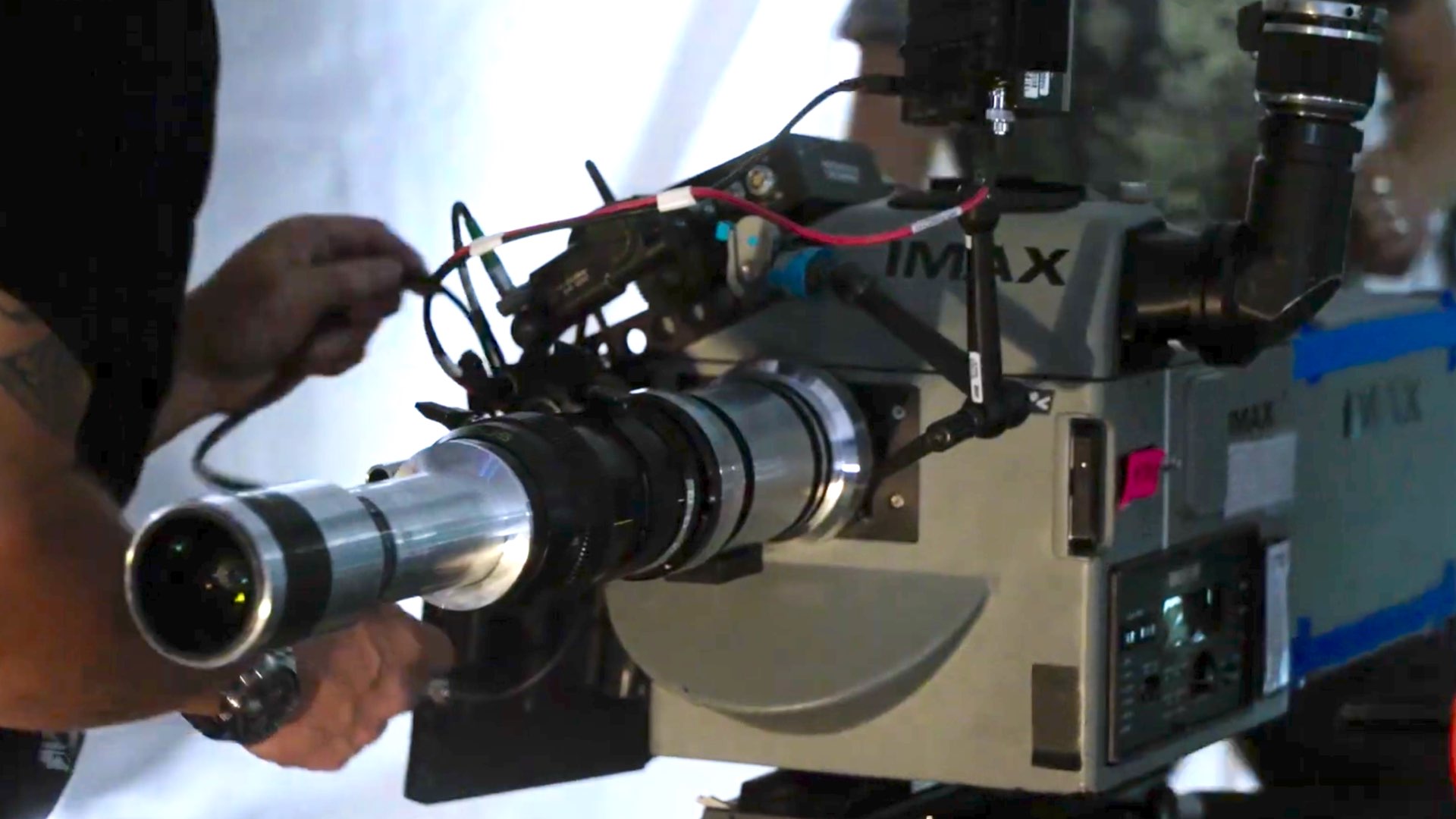
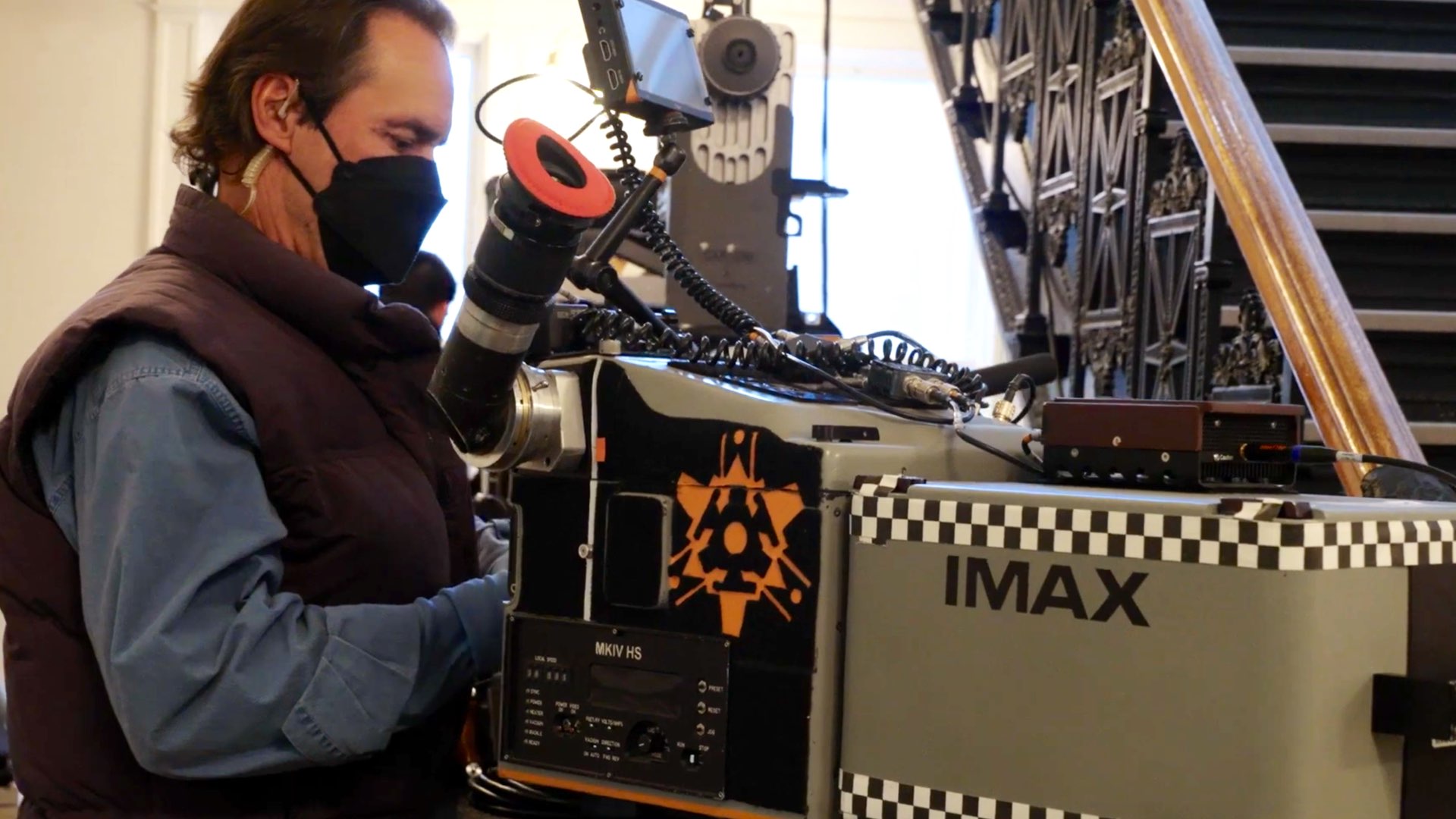
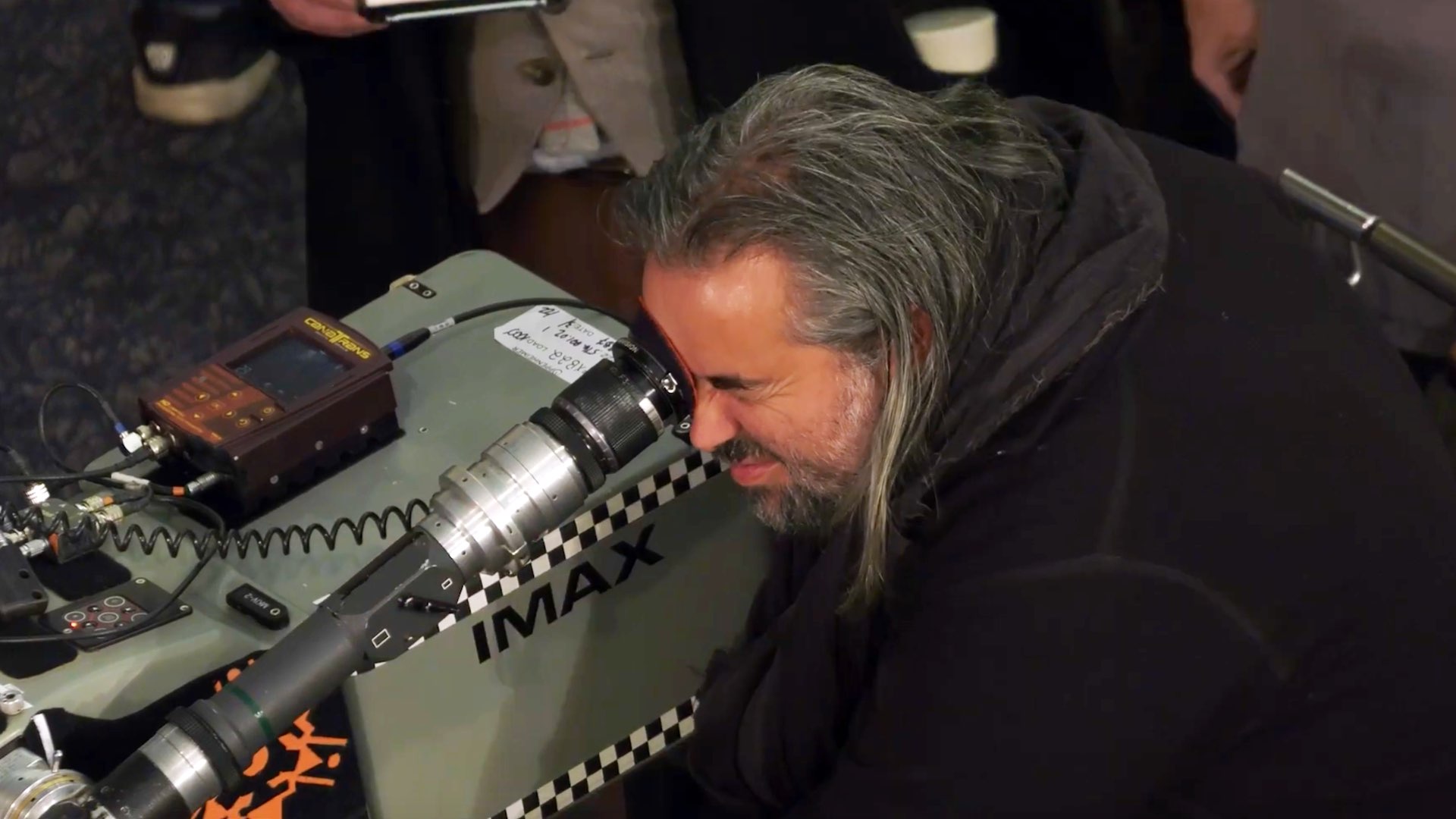
Chris (Nolan) is always pushing the boundaries, innovating each film he does. On Oppenheimer, one of the things that were really important in the script was adjust-position the color of black and white.
Oppenheimer’s Executive Producer Thomas Hayslip
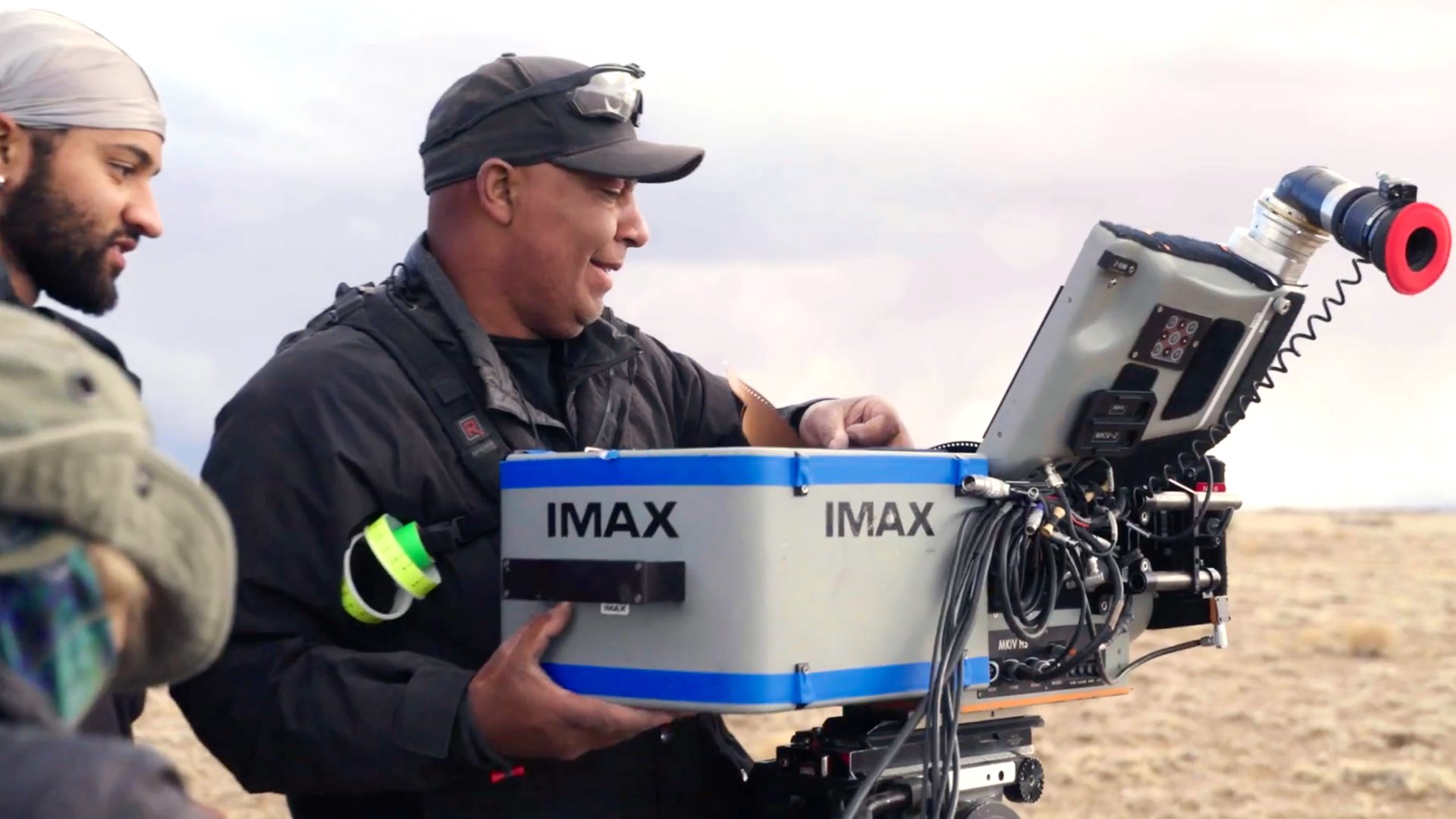
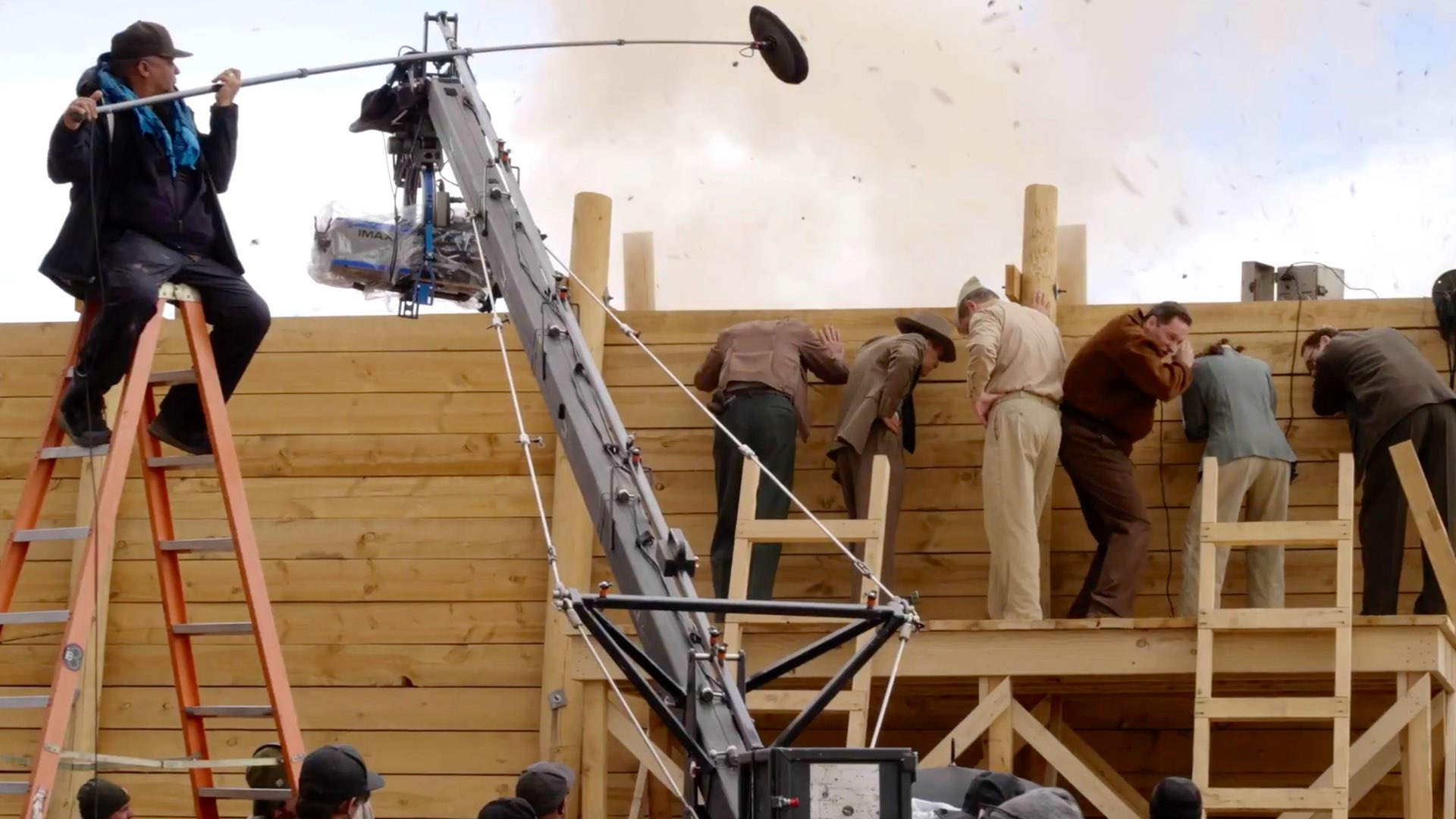
Talking about B&W 65mm film
Oppenheimer’s Executive Producer Thomas Hayslip elaborates on the innovative approach of shooting Oppenheimer: “Chris (Nolan) is always pushing the boundaries, innovating each film he does. On Oppenheimer, one of the things that were really important in the script was adjust-position the color of black and white”. Hoyte adds in that regard: “How we going to do it because 65mm film black and white was a format that didn’t exists. So there was a lot of engineering went into that”. Then Hayslip explains: “We actually had to create the black and white film that we were using to shoot”. Moreover, Director Christopher Nolan adds more info regarding the black and white film stock created especially for Oppenheimer: “We test the black and white stock, put it on a giant IMAX screen and had a look at it, and the results were magical and inspiring”. Watch the BTS below:
We test the black and white stock, put it on a giant IMAX screen and had a look at it, and the results were magical and inspiring.
Oppenheimer Director Christopher Nolan
Final thoughts
Oppenheimer’s runtime is more than 3 hours. We don’t think it will be loaded with action though, since it looks more like a drama. However, there will be one big explosion for sure, and that explosion has created a lot of buzz around it. Anyway, with all the Films for IMAX projects, now we have an opportunity to see a real ‘Film in IMAX’ movie, made by true IMAX specialists (Nolan and Hoyte), and by using new methods to be presented on the huge canvas. For the lucky cinephiles between us, that live near a 15/70 projector, a very special experience is expected. Let’s hope that the physics will not be too complicated, as we know that in Nolan’s films, we need to get a degree in Quantum mechanics. We end this article by stating Matt Damon (playing Leslie Groves Jr. in Oppenheimer): “Nolan kind of invented the idea of shooting feature film on IMAX cameras”. We wish more movie directors had the same approach.
If you’re a fan of filmmaking and want a very special gift, you should check out our super unique Y.M.CINEMA 65 which is a one-of-kind stainless steel model of motion picture 65mm film cinema camera. It was meticulously designed and manufactured by us with a pure love for motion pictures. The Y.M.CINEMA 65 can be purchased at our 65 STORE for a modest price of $34.95 USD.

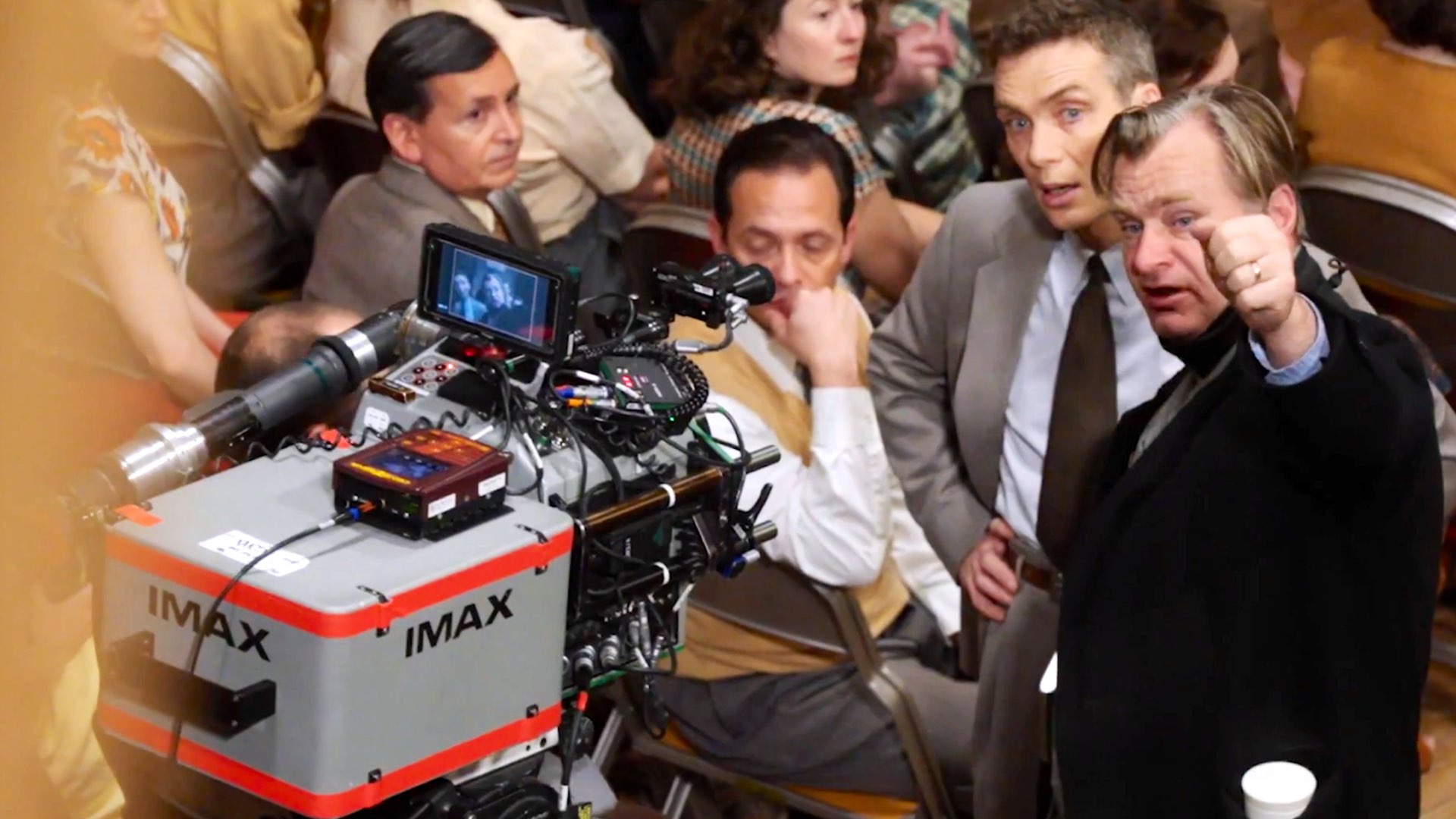

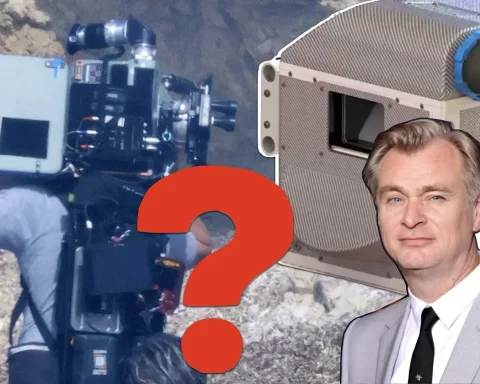
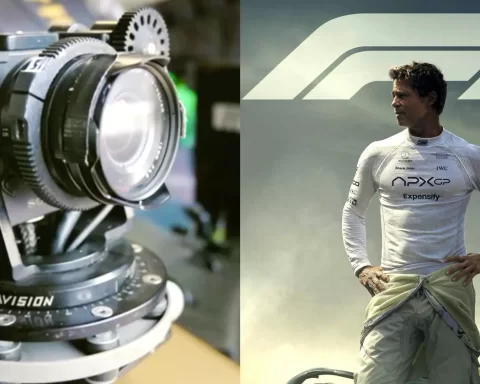


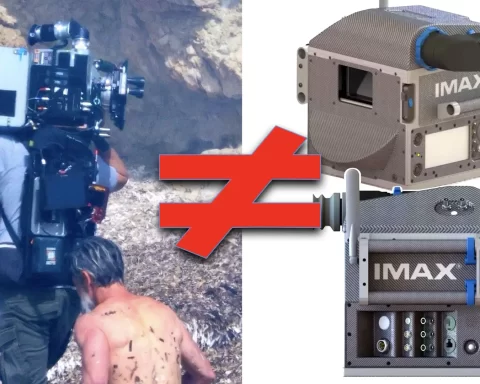

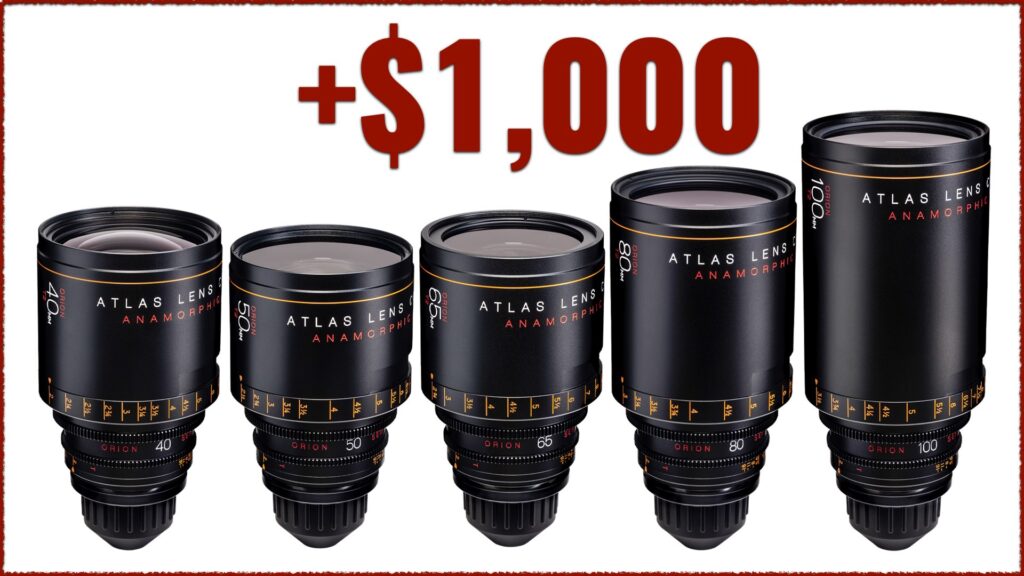
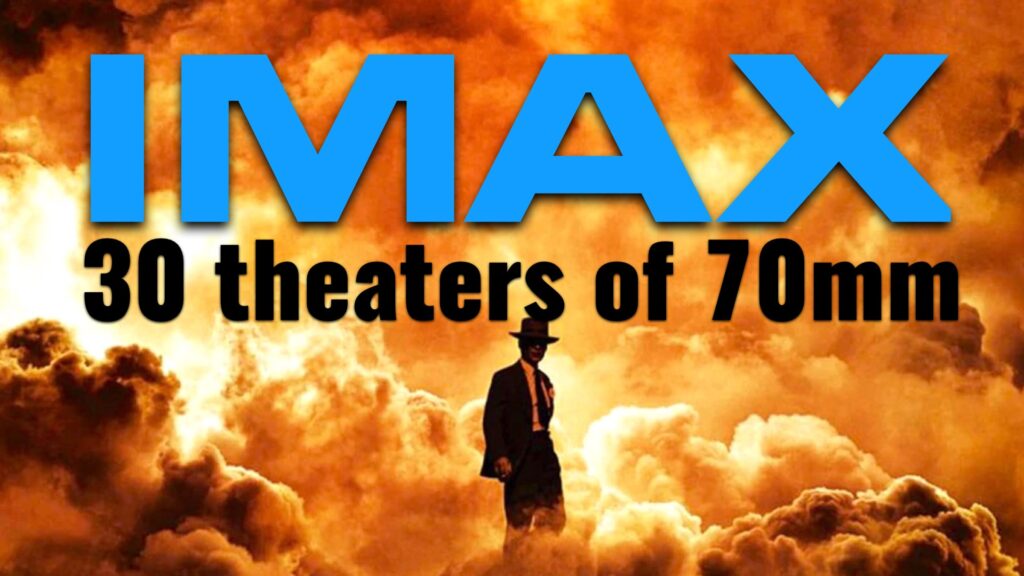





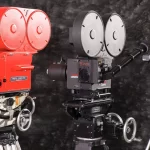

I believe you mean “juxtaposition” in the couple of places in the article where “adjust-position” are use.